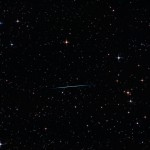Next year on August 21, the United States will experience a total solar eclipse. While I will be able to see the solar eclipse in Wisconsin, I will not experience a total eclipse. In fact, I will need to head south and west to states like Nebraska, Kentucky and Missouri to reach part of the US where the moon will fully block the sun. Why is everyone talking about the 2017 Solar Eclipse in 2016? So you can plan your vacation of course!
Have a relative or friend you haven’t seen in a while conveniently located in the total eclipse zone? Ask if they would be willing to cohost a Solar Eclipse party. Alternatively, just ask to stay with friends or family and join up with any public observations of the solar eclipse. You need to plan a family vacation anyway, right? Why not conveniently plan to stay in a location where hey, there’s a total solar eclipse today. Let’s watch! Fun and educational for everyone.
Don’t forget your eclipse viewing glasses (so attractive in cardboard chic) or add filters to telescopes and binoculars for magnified viewing pleasure. Bonus to a total solar eclipse? You can gaze at the moon-blocked sun with your naked eyes for up to 2.5 minutes, depending on location. Just don’t look too long to preserve your retinas.
So if you need an excuse to plan a unique vacation (and maybe appease some rarely seen friends and relatives), consider placing yourself in the swath of the country where the moon will obliterate your view of the sun (for less than three minutes). And if these locations don’t appeal to you, just wait until 2024 when the eastern portion of the US will be treated to a total solar eclipse. Different cities in which to vacation and other relatives to visit!
 This week we travel to outer space, the Final Frontier, to catch a glimpse of the Southern Delta Aquarid Meteor Shower. But don’t worry, you don’t have to leave your backyard. Just grab a blanket and find a place without too much light pollution, and you’ll be able to catch a glimpse of this worldwide phenomenon.
This week we travel to outer space, the Final Frontier, to catch a glimpse of the Southern Delta Aquarid Meteor Shower. But don’t worry, you don’t have to leave your backyard. Just grab a blanket and find a place without too much light pollution, and you’ll be able to catch a glimpse of this worldwide phenomenon.